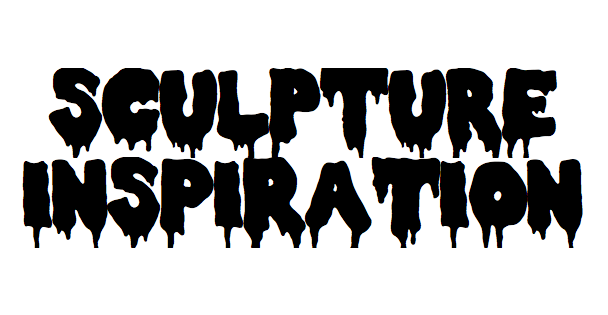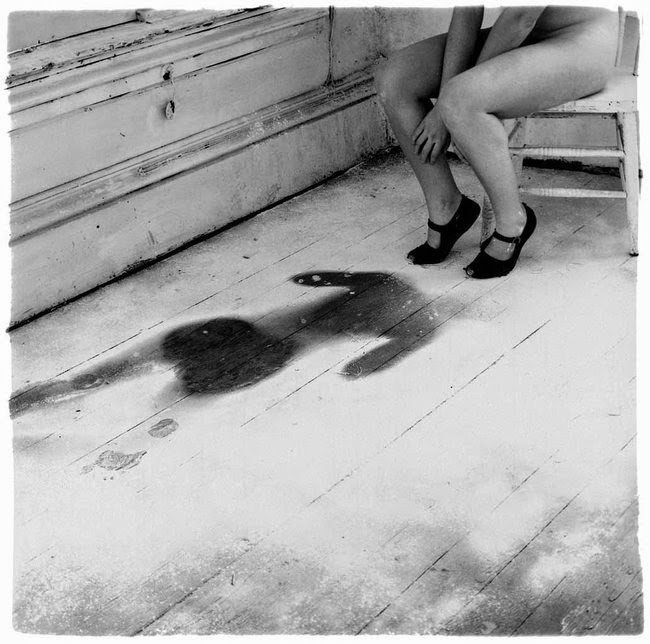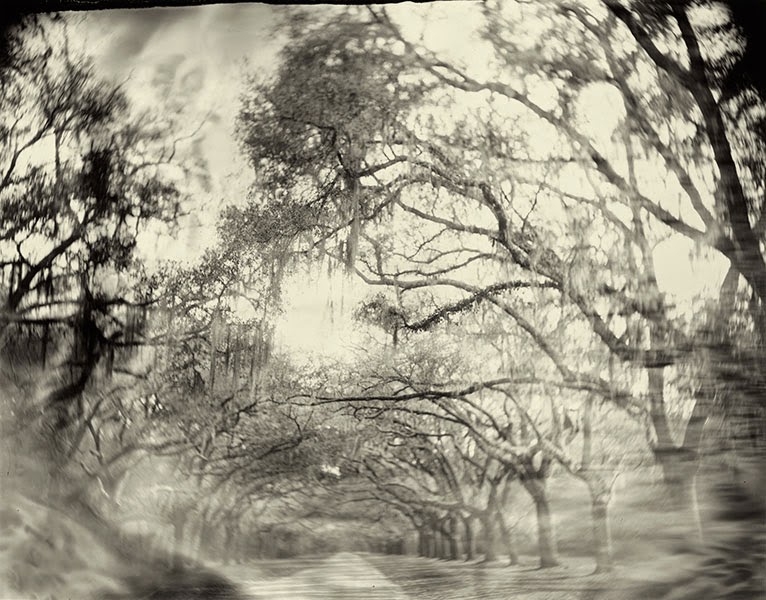Wednesday, May 14, 2014
Disgust, Happiness, Sadness, Fear, Anger, and Surprise
Disgust, Happiness, Sadness, Fear, Anger, and Surprise places emphasis on art abstracted to its essential form and exhibits the creative disconnect associated with the seemingly empty shelves. At the core of this piece is Paul Ekman's research of the six basic human emotions from which all other emotions are derived. Inspired by Sol Lewitt's machine-like method of planning and decision-making and Eva Hesse's use of mindless repetition, the replication of shelves suggests assembly lines and factories in which there is no room for emotions. The six intangible emotions are impossible to assess when not represented by anything except space. In addition, this piece resembles methods of psychotherapy in conjunction with minimalism, in which repetition and instruction are provided as means of control.
Labels:
artist statement,
documentation,
Emotions,
shelves
sol lewitt and other inspiration from the textbook
I took inspiration from Sol Lewitt's work in the Contingent Object of Contemporary Art's chapter Authorship and Authority.
I like the idea of minimalism as the ideal form/reduced to the essential elements. The cubic shapes are no-nonsense and pure.
In minimalism, the artist becomes disconnected from the work once it's complete. The connection is severed and is then given to the viewer.
Sol Lewitt said "When an artist uses a conceptual form of art, it means that all of the planning and decisions are made beforehand and the execution is a perfunctory affair. The idea becomes the machine that makes the art." By following a set of instructions, the installation becomes another form of creative disconnect.
I like the idea of minimalism as the ideal form/reduced to the essential elements. The cubic shapes are no-nonsense and pure.
In minimalism, the artist becomes disconnected from the work once it's complete. The connection is severed and is then given to the viewer.
Sol Lewitt said "When an artist uses a conceptual form of art, it means that all of the planning and decisions are made beforehand and the execution is a perfunctory affair. The idea becomes the machine that makes the art." By following a set of instructions, the installation becomes another form of creative disconnect.
This correlates with the training and expectation of emotional reactions to art.
Labels:
artist-based,
Emotions,
minimalism,
research,
shelves,
sol lewitt
art and fear
Revisited Art and Fear when trying to invent new meanings to the shelves without the cubes, particularly of finishing art that doesn't appear to be finished.
Making art ABOUT making art is pretty ambitious but I think is similar to my poetry class in which a few people wrote their weekly poems about not having ideas for poems. Making art is such an emotional thing for me, so by inserting emotions into art I'm facing fears about them. I wanted to persevere in the face of defeat, and without the cubes this piece still needed to make sense.
Making art ABOUT making art is pretty ambitious but I think is similar to my poetry class in which a few people wrote their weekly poems about not having ideas for poems. Making art is such an emotional thing for me, so by inserting emotions into art I'm facing fears about them. I wanted to persevere in the face of defeat, and without the cubes this piece still needed to make sense.
Labels:
Emotions,
non-artist-based,
research,
shelves
Monday, May 12, 2014
Leave
Inspired by Sally Mann's strong connection to home and Andy Goldsworthy's ephemeral earthworks, Leave is presented as a photographic document of a sculptural work featuring leaves transferred across states. The artist's home and current residence are represented in equal-sized photographs of piles of leaves on ground. In Louisiana, the green and freshly-picked leaves are symbolic of growth and life, while the Wisconsin leaves scraped from the unfrozen ground are symbolic of decay and death. When paired, this juxtaposition is intended to create an artistic paradox within the viewer. Viewers may find that the changes of the seasons connect to distinct aspects of their own searches for home.
Sunday, May 11, 2014
emotions as minimalism
That emotions are such complex subjective experiences is why I wanted to pair them with minimalism. A lot of my art lately has been about trying to regain control over things that are lost. By not having any representation of emotion present in the artwork, it's saying two distinctly different things: that you can see through emotions, and that you can't see emotions at all. I've been doing a lot of reading about areas of the brain associated with different emotions and found that the neurocircuitry is pretty chemically regulated for a species with extreme highs and lows. The physical energy is discharged by neurochemicals dopamine, noradrenaline, and serotonin to allow us to emotionally react as expected.
The experience of emotions can't be seen between/among social groups unless we choose to share them, however they can share the same physiological responses through social cognition which generally develops in adolescence.
The emotions' presence on the shelves is showcasing them as something organizable and displayable, which also works in psychotherapy through categorizing and regulating. Also the instruction typically given in minimalist art is comparable to instruction given in psychological assessment.
The experience of emotions can't be seen between/among social groups unless we choose to share them, however they can share the same physiological responses through social cognition which generally develops in adolescence.
The emotions' presence on the shelves is showcasing them as something organizable and displayable, which also works in psychotherapy through categorizing and regulating. Also the instruction typically given in minimalist art is comparable to instruction given in psychological assessment.
Labels:
Emotions,
minimalism,
non-artist-based,
research
Francesca Woodman
Francesca Woodman's work is very far removed from my own but I've been looking at her photographs so frequently that they accidentally seeped into the creative part of my mind, especially during my research of human emotions.
I read a fairly gratuitous article about how Francesca Woodman is "the Sylvia Plath of Photography", comparing their young suicides and artistic legacies and how in retrospect you can see death among their art.
I think in terms of forcing emotion into art, Woodman is the greatest example I know. I see ghosts when I look at these. She uses her body as a material which is really interesting to me in terms of the chemical makeup of bodies. How are we different from paint and turpentine? How are our minds different from materials if our organs are just matter after all? To me Woodman's photographs are physical renderings of human emotions and souls.
I read a fairly gratuitous article about how Francesca Woodman is "the Sylvia Plath of Photography", comparing their young suicides and artistic legacies and how in retrospect you can see death among their art.
I think in terms of forcing emotion into art, Woodman is the greatest example I know. I see ghosts when I look at these. She uses her body as a material which is really interesting to me in terms of the chemical makeup of bodies. How are we different from paint and turpentine? How are our minds different from materials if our organs are just matter after all? To me Woodman's photographs are physical renderings of human emotions and souls.
Labels:
artist-based,
Emotions,
Francesca Woodman,
research
Sally Mann
Sally Mann's landscapes. Strong connection to place/ huge inspiration in my life right now.
Watched a documentary before finishing this project about Sally Mann. She says "It never occurred to me to leave home to make art." and "The things that are close to you are the things you can photograph the best." I knew I needed to make art about home and my sense of home is very shaken lately. By transferring parts of places to other places, I was able to answer questions about home. Tying leaves to trees was the first time I felt like connecting something in art really made sense.
Subscribe to:
Posts (Atom)
posts:
-
▼
2014
(38)
-
▼
May
(14)
- Disgust, Happiness, Sadness, Fear, Anger, and Surp...
- sol lewitt and other inspiration from the textbook
- art and fear
- Leave
- emotions as minimalism
- Francesca Woodman
- Sally Mann
- Andy Goldsworthy
- Eva Hesse- Sans II
- Floating Shelves
- Emotion/Pain Charts
- Wisconsin Leaves/Louisiana Leaves
- Wisconsin Leaves/Louisiana Leaves
- Disgust, Happiness, Sadness, Fear, Anger, and Surp...
-
▼
May
(14)











